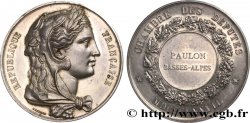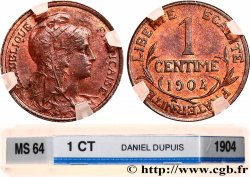E-auction 527-445827 - fme_837925 - III REPUBLIC Médaille, Palais du Champ de Mars / Trocadéro
You must signin and be an approved bidder to bid, LOGIN TO BID. Accounts are subject to approval and the approval process takes place within 48 hours. Do not wait until the day a sale closes to register. Clicking on « bid » constitutes acceptance of the terms of use of cgb.fr private e-auctions.
Bids must be placed in whole Euro amounts only. The sale will start closing at the time stated on the item description; any bids received at the site after the closing time will not be executed. Transmission times may vary and bids could be rejected if you wait until the last second. For further information ckeck the E-auctions F.A.Q.
NO BUYER'S FEE.
NO BUYER'S FEE.
| Estimate : | 60 € |
| Price : | 19 € |
| Maximum bid : | 42 € |
| End of the sale : | 22 May 2023 18:50:40 |
| bidders : | 5 bidders |
Type : Médaille, Palais du Champ de Mars / Trocadéro
Date: 1878
Mint name / Town : 75 - Paris
Metal : bronze
Diameter : 46,15 mm
Orientation dies : 12 h.
Engraver LAGRANGE Jean (1831-1908) / DUBOIS Alphée (1831-1905)
Weight : 62,49 g.
Edge : lisse + abeille BRONZE
Puncheon : Abeille (1860 - 1880)
Coments on the condition:
Médaille nettoyée. Présence de quelques taches et concrétions. Petite usure
Obverse
Obverse legend : EXPOSITION UNIVERSELLE // PALAIS DU CHAMP DE MARS / PARIS 1878.
Obverse description : Vue du Palais du champ de Mars, signé : LAGRANGE.
Reverse
Reverse legend : REPUBLIQUE FRANCAISE // PALAIS DU TROCADERO / ADMINISTRATION DES MONNAIES / ET MEDAILLES.
Reverse description : Vue du palais du Trocadéro, avec ses escaliers monumentaux et ses jardins. Signé : ALPHEE DUBOIS.
Commentary
Le palais du Trocadéro était une construction de la seconde moitié du XIXe siècle de tendance éclectique, d'inspirations mauresque et néo-byzantine situé dans le 16e arrondissement de Paris, sur la colline de Chaillot, entre la place du Trocadéro et les jardins du même nom. Il était composé d'une salle de spectacle de 4 600 places prolongée de chaque côté par deux ailes courbées, accueillant chacune un musée (le musée des Monuments français et le musée d'ethnographie) et des salles de conférences.
Construit à l'occasion de l'exposition universelle de 1878, il n'était pas destiné à survivre à l'événement ; si le bâtiment est finalement conservé pendant une soixantaine d'années, il est l'objet de nombreuses critiques concernant son style architectural, son progressif délabrement et la mauvaise acoustique de la grande salle, rapidement désertée par les orchestres. Il est démantelé en 1935 pour l'exposition spécialisée de 1937, afin de laisser la place à une nouvelle construction, le palais de Chaillot.
Construit à l'occasion de l'exposition universelle de 1878, il n'était pas destiné à survivre à l'événement ; si le bâtiment est finalement conservé pendant une soixantaine d'années, il est l'objet de nombreuses critiques concernant son style architectural, son progressif délabrement et la mauvaise acoustique de la grande salle, rapidement désertée par les orchestres. Il est démantelé en 1935 pour l'exposition spécialisée de 1937, afin de laisser la place à une nouvelle construction, le palais de Chaillot.








 Report a mistake
Report a mistake Print the page
Print the page Share my selection
Share my selection Ask a question
Ask a question Consign / sell
Consign / sell
 Full data
Full data








